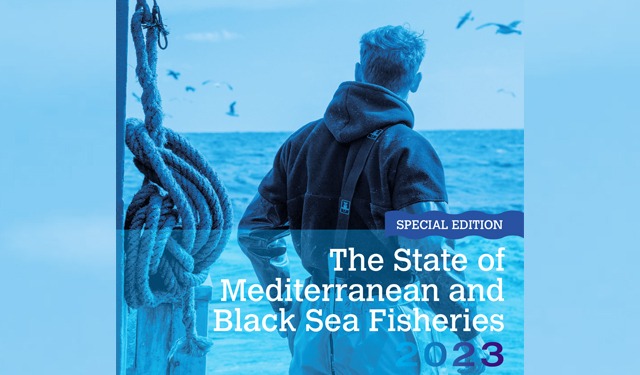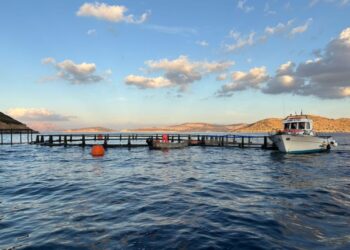Less overfishing in the Mediterranean and Black Sea – According to a recently published report, the percentage of overfished stocks in the Mediterranean and Black Sea has fallen below 60 percent for the first time, following a downward trend that began ten years ago.
Although overfishing remains a concern, the report The State of Mediterranean and Black Sea Fisheries 2023 (SoMFi 2023) records a 15% decrease in the last year, an improvement consistent with a continued reduction in fishing pressure, which has fallen by 31% since 2012.
The report is the flagship publication of the General Fisheries Commission for the Mediterranean (GFCM) and the Food and Agriculture Organisation of the United Nations (FAO). For the first time, this year’s report also includes data on the region’s marine aquaculture sector.
Marine fisheries and aquaculture generate more than $20 billion in revenues
The GFCM, a regional fisheries management organisation, is responsible for wild capture fisheries and aquaculture in marine and brackish waters in the Mediterranean and Black Sea. Fishing and aquaculture together produced almost 2 million tonnes of seafood products in 2021, data from SoMFi 2023 show. Economically, the two countries played an equally important role, generating more than $20 billion in revenue and supporting 700,000 jobs along the value chain.
“This special edition of SoMFi paints a comprehensive picture of this vital sector, highlighting how important it is for livelihoods, food security and nutrition in our region,” said GFCM Executive Secretary Miguel Bernal. “We have worked intensively with countries and their experts to collect and aggregate the best quality data, and this is what makes SoMFi a key tool to support decision-making and monitor progress towards achieving sustainable fisheries and aquaculture in the Mediterranean and Mr Black,” he added.
Positive trends in fisheries, but the sector remains under stress
Although overfishing of fish stocks has decreased significantly, fishing pressure in the Mediterranean and Black Sea is still at twice the level considered sustainable. However, the report also shows that the GFCM’s continued focus on expanding management plans and technical and spatial measures is yielding positive results for key commercial species. Stocks of hake in the Mediterranean Sea, turbot in the Black Sea and sole in the Adriatic Sea, all covered by dedicated management plans, have shown significant reductions in overfishing, with some already showing signs of biomass recovery.
Some stocks subject to management plans show above-average reductions in fishing pressure. Notable examples include a 77% reduction for sole in the Adriatic Sea, which has now reached sustainable exploitation rates, and a 73% reduction for turbot in the Black Sea.
Guided by its Strategy 2030 and incorporating FAO’s vision for Blue Transformation, the GFCM implements 10 multi-year management plans involving nearly 7,000 vessels and protects sensitive species and vulnerable marine ecosystems, including deep-water corals, as well as essential fish habitats such as spawning and nursery grounds, with ten fisheries restricted areas covering more than 1.75 million square kilometres in the Mediterranean and Black Sea.
Throughout the region, catches are still largely dominated by small pelagic fish, mainly anchovies and European sardines. In the Mediterranean, 55 species make up 90 per cent of catches, while in the Black Sea only five species account for the same proportion.
Overall production levels of capture fisheries have remained stable in recent years, with Turkey, followed by Italy and Tunisia, recording the highest number of landings.
Small vessels make up the vast majority of the fishing fleet and provide more than half of total employment. Although they only account for about 15% of catches, these vessels represent almost 30% of total revenue.
Aquaculture is a fast-growing sector
SoMFi reports that, unlike capture fisheries, the region’s marine aquaculture sector is growing significantly. Marine and brackish water aquaculture production has almost doubled in the last ten years, increasing by 91.3%, with revenues up 74.5%.
The three main production methods used in the region are sea cages, ponds and suspension farming, while the most commonly farmed species are sea bream, sea bass and Mediterranean mussel.
Turkey, Egypt and Greece are, in that order, the three largest regional producers, together accounting for 71% of the total volume.
This special edition of SoMFi comes just one year after the previous one. It communicates its findings in a condensed format and sets the series on a new two-year cycle, with the next issue scheduled for 2025.
Less overfishing in the Mediterranean and Black Sea







